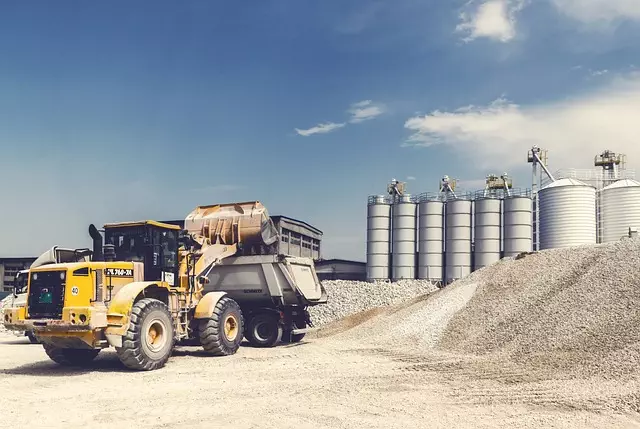Industrial hygiene prioritizes worker safety in industrial settings through comprehensive hazard recognition and management. This involves identifying physical risks like harmful substances, noise, and extreme temperatures, followed by systematic exposure monitoring. By leveraging advanced technologies, regular inspections, and employee feedback, professionals assess hazards and implement controls, including PPE, engineering solutions, and work practice modifications. Continuous proactive measures ensure a safer work environment, promote health, and maintain compliance with industrial hygiene standards. Key practices include dedicated hazard recognition teams, training, risk assessment integration, exposure testing, and health surveillance programs.
In today’s industrial landscape, recognizing and mitigating physical hazards is paramount for ensuring workplace safety. This article delves into the essentials of industrial hygiene and hazard recognition, underscoring their pivotal roles in fostering a secure environment. We explore the significance of hazard assessment as a proactive measure, coupled with effective exposure monitoring techniques. By identifying common physical dangers, from airborne particles to extreme temperatures, we’ll unveil best practices for continuous hazard recognition and mitigation, empowering professionals to create safer industrial settings.
- Understanding Industrial Hygiene and Hazard Recognition
- The Role of Hazard Assessment in Workplace Safety
- Methods for Exposure Monitoring: Tools and Techniques
- Identifying Common Physical Hazards in Industrial Settings
- Best Practices for Continuous Hazard Recognition and Mitigation
Understanding Industrial Hygiene and Hazard Recognition
Industrial Hygiene plays a pivotal role in ensuring worker safety and health in industrial settings. It involves the science of recognizing, evaluating, and controlling hazards present in the work environment. By implementing effective hazard recognition and assessment strategies, organizations can identify potential risks and take proactive measures to mitigate them. This includes regular inspections, exposure monitoring, and the use of advanced technologies to track workplace conditions.
Proper hazard recognition goes beyond simply identifying dangers; it requires a comprehensive understanding of how workers interact with their surroundings. It involves analyzing tasks, processes, and materials to predict possible health effects. With this knowledge, employers can implement tailored control strategies, such as engineering controls, administrative measures, and personal protective equipment (PPE), to minimize or eliminate worker exposure to hazardous substances.
The Role of Hazard Assessment in Workplace Safety
Hazard assessment plays a pivotal role in workplace safety, acting as a cornerstone for industrial hygiene practices. It involves systematically identifying and evaluating potential risks within a work environment to ensure the well-being of employees. By employing methods like hazard recognition and assessment, organizations can pinpoint specific dangers such as exposure to harmful substances, ergonomically challenging tasks, or unsafe machinery. This proactive approach allows for the implementation of necessary controls and interventions.
Effective hazard assessment drives exposure monitoring, which is crucial for understanding how workers interact with potential risks. Monitoring helps quantify and qualify exposures, enabling employers to make informed decisions regarding personal protective equipment (PPE), engineering controls, and work practice changes. Ultimately, this comprehensive process contributes to a culture of safety, fosters a healthier workplace, and mitigates the likelihood of accidents and occupational diseases.
Methods for Exposure Monitoring: Tools and Techniques
Identifying potential physical hazards is a crucial step in ensuring worker safety, especially in industrial settings where exposure to various risks is a constant concern. Industrial hygiene professionals employ several sophisticated tools and techniques for effective hazard recognition and assessment. These methods are designed to monitor and evaluate potential dangers, allowing employers to implement appropriate control measures.
One commonly used approach is the implementation of comprehensive exposure monitoring programs. This involves taking regular samples and measurements of the air quality, noise levels, temperature, humidity, and other environmental factors in the workplace. Advanced technologies such as wearable sensors, real-time monitoring devices, and sophisticated analytical equipment play a pivotal role in this process. By analyzing these data, professionals can identify excessive exposures to hazardous substances, loud noises, or extreme temperatures, enabling them to take proactive steps to protect workers’ health and well-being.
Identifying Common Physical Hazards in Industrial Settings
In industrial settings, identifying common physical hazards is a critical aspect of ensuring worker safety and maintaining industrial hygiene. These hazards can include noise exposure, toxic chemical fumes, mechanical dangers like moving parts or heavy machinery, and even extreme temperatures. Proper hazard recognition and assessment are essential steps in mitigating risks and preventing accidents. Regular exposure monitoring helps employers understand the extent of potential harm and implement targeted controls to protect workers.
Industrial hygiene professionals play a pivotal role in identifying these hazards through site inspections, data analysis, and employee feedback. By utilizing various tools and techniques, they can pinpoint sources of physical risks and develop strategies to minimize or eliminate them. This proactive approach not only safeguards the health and well-being of employees but also aligns with legal obligations related to workplace safety, ensuring compliance with relevant regulations and standards.
Best Practices for Continuous Hazard Recognition and Mitigation
In the realm of industrial hygiene, continuous hazard recognition and mitigation are paramount to fostering a safe working environment. Organizations should adopt a proactive approach by implementing regular and systematic hazard assessments. This involves a comprehensive review of all processes, equipment, and materials to identify potential risks, including physical hazards like noise, heat, or chemical exposures. A robust system for documenting and communicating these findings is essential.
Effective best practices include establishing dedicated teams or assigning specific roles for hazard recognition, ensuring adequate training in identification techniques, and integrating risk assessment into routine operations. Continuous monitoring through exposure testing and regular health surveillance programs can help track potential issues over time. By prioritizing proactive measures, organizations can mitigate risks before they escalate, thereby enhancing overall worker well-being and compliance with safety regulations.


